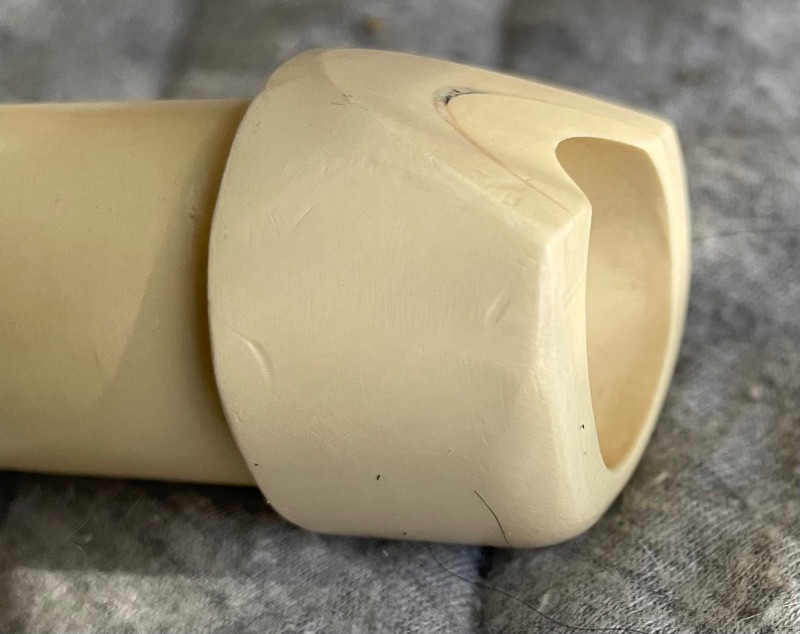Playing Shakuhachi
My while-back Buddhist e-friend (never met in person) Jordan Fountain, made me a shakuhachi from hardware store piping as a memento of undergoing Jukai (taking the Buddhist vows).
Shakuhachi is a Japanese front blown flute named for it's traditional length of one shaku and eight (hachi) sun (pronounced - "suhn" - not pronounce like our local star).



1. Chin supports flute. Don't press flute to chin to support it. A simple tilt of the head should cause the flute to drop.
2. Embouchure - is not a puckering of the lips, nor a whistle blowing position. It's a little pronouncing the letter "T". A slight tension at the corners of the mouth. The embouchure is like a small grain of rice in the center of otherwise sealed (in a relaxed way) lips.
3. Good posture - see point 1.
4. A feeling of air moving into your mouth is dammed in (like water) by your lips and is under controlled release. Maybe this is like my "puffing" or "spouting" when sleeping. Lips are relaxed and closed under a little tension from the corners of the mouth. Air is brought into the mouth until it overcomes the lip seal. It is not blown out.
5. Dynamic Start -
- Place the sharp edge between your teeth with the plane of the cut about horizontal and teeth about 1/4 inch apart.
- Then lower the flute to about 45 degrees.
- Bring the angle back up, while winding (blowing) until a sound is made.
6. The air stream i more into the fllute than across the top. It is NOT like blowing across a bottle. If the jaw relaxes, it can move back, changing an empty tone to a full one.
My Interpretation: The tone could be due to a splitting of the airstream. It could split up or down. When split down, it can excite better resonance from the flute.
7. With a well made flute, the same embouchure can be used for every note.



Comments
Post a Comment